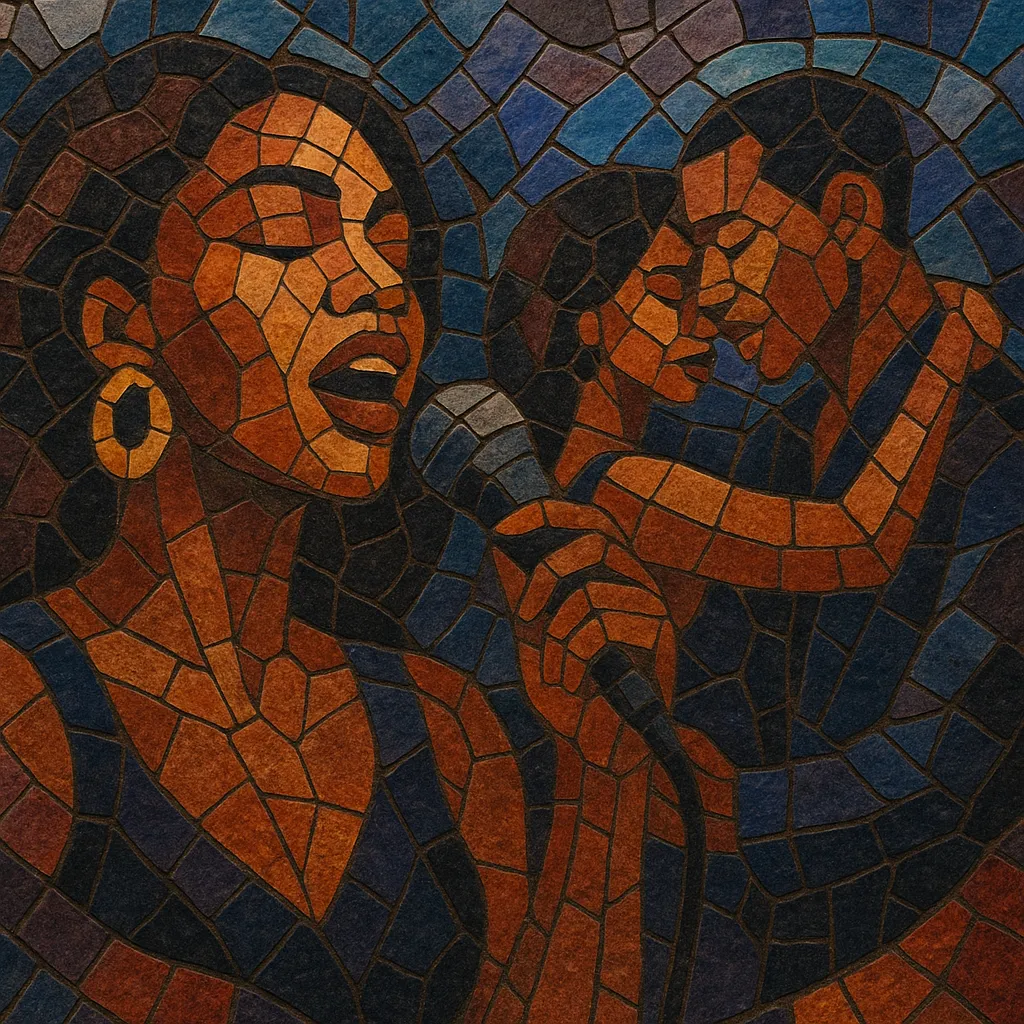R&B (Rhythm and Blues) is a vocal- and groove-centered popular music tradition that blends blues tonality, jazz harmony, and gospel-inflected singing with a steady backbeat. It emphasizes expressive lead vocals, call-and-response, lush harmonies, and danceable rhythms.
From its 1940s roots in African American communities to its later evolutions, R&B has continually absorbed and reshaped surrounding sounds—from jump blues and swing in the early days to soul, funk, hip hop, and electronic production in the contemporary era. Today, R&B ranges from intimate, slow-burning ballads to club-ready tracks, all tied together by a focus on feel, melody, and vocal performance.
The term “rhythm and blues” emerged in the United States in the late 1940s to describe a new, electrified, dance-oriented music developed in African American communities. It drew on blues song forms and timbres, jazz harmony and instrumentation, gospel’s vocal fervor and call-and-response, and the uptempo drive of swing and jump blues. Early R&B featured prominent saxophones, piano/boogie-woogie figures, backbeat-heavy drumming, and powerful lead vocals.
In the 1950s, R&B’s rhythmic drive and melodic hooks helped catalyze rock & roll while simultaneously evolving into smoother, vocally rich forms that fed directly into soul music. Labels and regional scenes (e.g., New Orleans R&B, Chicago, Detroit) shaped distinct sounds. By the 1960s, artists and producers refined R&B with orchestration, sophisticated songwriting, and gospel-inflected leads, laying the foundation for Motown, southern soul, and deep soul.
R&B intersected with funk and disco in the 1970s, emphasizing syncopated bass, clavinet riffs, string arrangements, and four-on-the-floor grooves. In the 1980s, drum machines, synthesizers, and studio sheen led to contemporary R&B, pairing rich vocal arrangements with polished, often electronic accompaniment. New jack swing fused R&B singing with hip hop rhythms and production, modernizing the genre’s dance and radio appeal.
The 1990s witnessed a merger of R&B’s melodic sensibility with hip hop beats and aesthetics. Producers focused on sampling, 808s, and layered harmonies, while vocalists showcased melisma, runs, and multi-part backgrounds. Quiet storm remained a staple for late-night radio, and R&B ballads dominated charts and soundtracks.
Contemporary R&B flooded mainstream pop, with powerhouse vocalists and hitmaking producers crafting crossover anthems and intimate mid-tempos. The sonic palette expanded to include crisper digital production, lush pads, and intricate vocal stacking, keeping the genre central to radio and global charts.
A wave of alternative R&B blurred lines with indie, electronic, and experimental hip hop. Atmospheric textures, moody harmonies, minimalist beats, and confessional songwriting defined a fresh aesthetic. Trap-soul blended trap percussion with soulful melodies, and the genre continued to evolve across global scenes while retaining its core: groove, emotion, and vocal expression.


